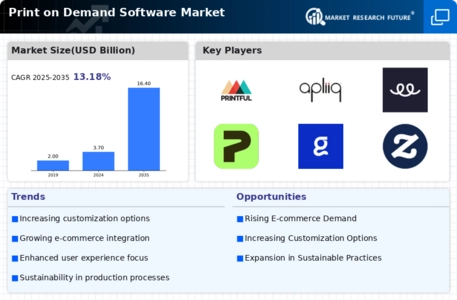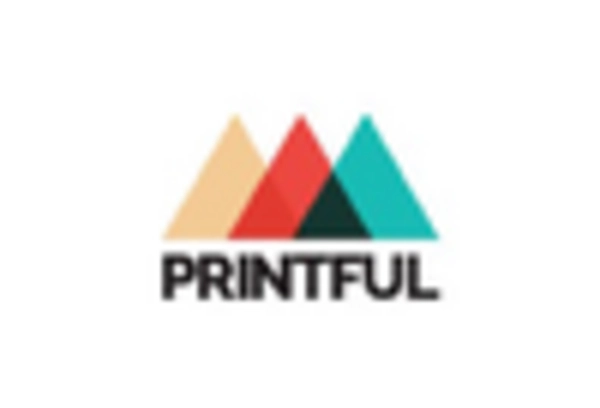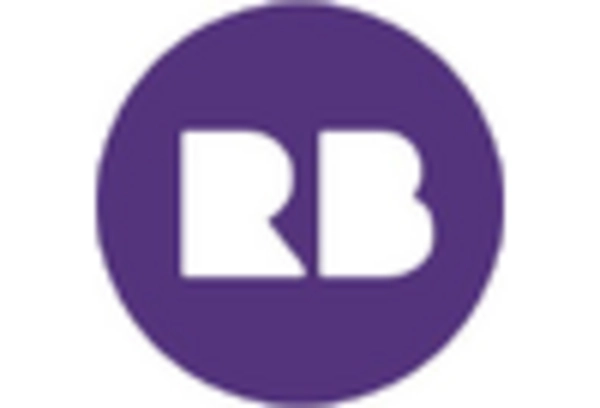The Print on Demand Software Market is currently characterized by a dynamic competitive landscape, driven by technological advancements and evolving consumer preferences. Key players such as Printful (US), Printify (US), and Redbubble (AU) are strategically positioning themselves to capitalize on these trends. Printful (US) focuses on innovation through the integration of advanced automation in its fulfillment processes, enhancing efficiency and reducing turnaround times. Meanwhile, Printify (US) emphasizes partnerships with various e-commerce platforms, thereby expanding its reach and accessibility to a broader customer base. Redbubble (AU), on the other hand, leverages its strong community of artists to differentiate its offerings, fostering a unique marketplace that appeals to niche audiences. Collectively, these strategies contribute to a competitive environment that is increasingly centered around customer experience and operational excellence.
In terms of business tactics, companies are increasingly localizing manufacturing to reduce shipping times and costs, which appears to be a critical factor in enhancing customer satisfaction. The market structure is moderately fragmented, with numerous players vying for market share, yet the influence of major companies remains substantial. This fragmentation allows for diverse offerings, but also intensifies competition as companies strive to establish their unique value propositions.
In August 2025, Printful (US) announced the launch of a new eco-friendly product line, which aligns with the growing consumer demand for sustainable products. This strategic move not only enhances Printful's brand image but also positions the company favorably in a market that increasingly values environmental responsibility. By diversifying its product offerings, Printful (US) is likely to attract a broader customer base, particularly among environmentally conscious consumers.
In September 2025, Printify (US) expanded its partnership with Shopify (Canada), enabling seamless integration for users looking to launch their own print-on-demand stores. This collaboration is significant as it streamlines the user experience, allowing entrepreneurs to easily access Printify's extensive catalog of products. Such strategic partnerships are crucial in enhancing operational efficiency and driving growth in a competitive market.
In July 2025, Redbubble (AU) introduced a new feature that allows artists to create limited edition products, thereby enhancing exclusivity and driving demand. This initiative not only empowers artists but also creates a sense of urgency among consumers, potentially increasing sales. By fostering a unique selling proposition, Redbubble (AU) strengthens its competitive edge in the market.
As of October 2025, the Print on Demand Software Market is witnessing trends such as digitalization, sustainability, and the integration of artificial intelligence. These trends are reshaping the competitive landscape, with companies increasingly forming strategic alliances to enhance their market positions. The shift from price-based competition to a focus on innovation, technology, and supply chain reliability is evident. Moving forward, competitive differentiation will likely hinge on the ability to adapt to these trends, with companies that prioritize sustainability and technological advancement poised to lead the market.

















Leave a Comment